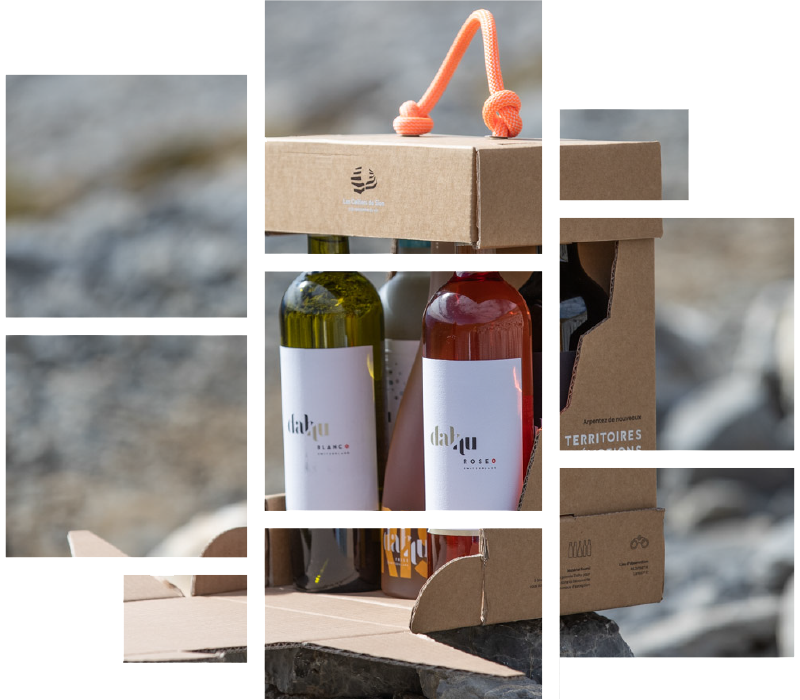When it comes to sporting activities in the mountains, various difficulty scales have been established. These indications are given according to the discipline (snowshoeing, skiing, snowboarding, mountain hiking, mountaineering or climbing) and provide information on the characteristics and conditions of the terrain.
At Les Celliers de Sion, our outdoor activities take place on a signposted route through the heart of our Clavau vineyard, whose degree of difficulty is T2.
Degree T2
Degrees of difficulty for hiking activity in Switzerland range from from T1 to T6. Level T2 is a course of moderate difficulty.
The paths and trails on the T2 route are continuously marked out. The terrain can sometimes besteep or rocky, which is why we use trekking boots are recommended.
The terrain is signposted to FSTP standards if it contains white red and white indications, as found on our signs along the route in the Clavau vineyards.

Our outdoor activities – T2
Gourmand hike
You’ll set off into the heart of our Clavau vineyard and enjoy a 3-course menu in one of our wine bungalows, plus 5 glasses of wine to sip along the way.
The Gatehouses Tour
With friends, family or colleagues, enjoy a day accompanied by a guide at the heart of the Domaines Bonvin and Varone. Gourmet stops, wine tasting and explanations about our Valais wine heritage!
All degrees of difficulty
These difficulty scales have one thing in common, whatever the discipline: the gap between easy and difficult is wide. So here’s a summary of the levels of difficulty used in Switzerland drawn up by the Swiss Alpine Club.
Description
Well-marked path or trail. Exposed areas (if any) are very well protected. All accident risks can be avoided with normal behavior.
If marked to FSTP standards: yellow.
Demands
None, also suitable for sneakers.
Orientation is not a problem.
Description
Uninterrupted path or trail with regular climbs. Sometimes steep terrain, risk of falling not excluded.
If marked to FSTP standards: white – red – white
Demands
Good footing, trekking boots recommended.
Basic orientation skills.
Description
Path not necessarily visible in the terrain, exposed passages can be secured with ropes or chains; hand support may be required for balance. Some exposed passages with risk of falling, scree, rocky slopes with no path.
If marked to FSTP standards: white – red – white
Demands
Very sure-footed, good trekking shoes. Average orientation skills.
Elementary mountain experiences.
Description
Path sometimes missing, hands sometimes needed to progress. Fairly exposed terrain, delicate grassy slopes, grassy slopes mixed with rocks. Easy snow and ice passages not covered with snow.
If marked to FSTP standards: white – blue – white.
Demands
Familiarity with exposed terrain, hard trekking boots. Ability to assess the terrain and good orientation skills.
Alpine experience: in bad weather, retreating can be difficult.
Description
Often pathless, some easy climbing. Difficult exposed terrain, rocky slopes. Glaciers and névés presenting a risk of slipping.
If signposted: white – blue – white.
Demands
Mountain boots. Confident assessment of the terrain and excellent orientation skills. Good mountaineering experience and basic knowledge of ice axe and rope handling.
Description
Mostly pathless, climbing passages up to II. Often very exposed, delicate rocky slopes. Snow-free glaciers with risk of slipping.
Generally unmarked.
Demands
Excellent orientation skills. Proven mountaineering experience and familiarity with technical mountaineering equipment.



